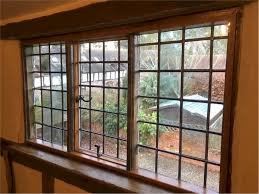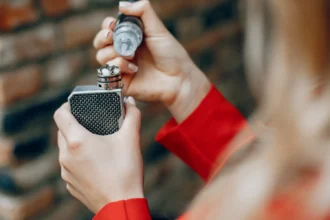What is the best type of secondary glazing for listed and heritage properties?
Go slim and discreet, then match how the original window opens.
- Sash windows: vertical sliders.
- Yorkshire sliders / wide openings: horizontal sliders.
- Casements and features: hinged units.
- Hard-to-reach or decorative shapes: lift-out or fixed panels.
Your choice comes down to window type, access, conservation rules, and the warmth/noise gains you want.
Why secondary glazing is often the smartest upgrade for period homes
Most listed buildings cannot take modern double-glazed replacements without planning issues or visual harm. Secondary glazing fills the gap: it boosts comfort while leaving the exterior untouched.
Key benefits
- Big cuts in heat loss.
- Strong noise reduction.
- No change to external sightlines.
- Works with arches, sunbursts and other “awkward” shapes.
- Reversible and usually acceptable in strict conservation areas.
First: confirm your window type
Sash windows (box sash or Yorkshire sliders)
- Move vertically, or sideways in Yorkshire styles.
- Need smooth, balanced travel.
Best match: vertical sliders for traditional sash; horizontal sliders for Yorkshire.
Casement windows
- Side-hung or top-hung; often with leaded lights.
Best match: hinged systems, horizontal sliders, or fixed units where access is limited.
Feature, shaped and arched windows
- Curved heads, Gothic arches, sunbursts, stained/etched glass.
Best match: fixed, lift-out or bespoke-shaped hinged units.
[Tip] A quick survey by a specialist will confirm the right system for each opening.
The best secondary glazing systems for heritage properties
1) Vertical sliding secondary glazing
Ideal for: box sash windows in Georgian and Victorian homes
Why it works
- Mirrors sash movement and ventilation habits.
- Slim meeting rail keeps the view clean.
- Strong balance of warmth, noise reduction and usability.
Often the top pick in strict conservation areas because the interior look is subtle and the exterior is unchanged.
2) Horizontal sliding secondary glazing
Ideal for: Yorkshire sliders, wide casements and multi-light windows
Why it works
- Handles wide spans neatly.
- Panels stack for flexible ventilation.
- Clean sightlines across large openings.
3) Hinged secondary glazing
Ideal for: casements and feature windows that open on traditional hinges
Why it works
- Intuitive door-like operation.
- Full access to latches, stays and catches.
- Best when windows need regular opening for air or cleaning.
4) Lift-out secondary glazing
Ideal for: windows rarely opened or where space is tight
Why it works
- Very discreet in deep reveals.
- Simple to remove for periodic cleaning.
- Favoured where conservation officers want minimal permanent fixings.
5) Fixed secondary glazing
Ideal for: shaped/curved windows that never open
Why it works
- Nearly invisible internally.
- Can be formed to Gothic arches, circles and sunbursts.
- Maximises thermal performance.
How secondary glazing improves warmth in heritage homes
Historic buildings lose heat through single panes, leaky joints and draught paths. Listed building secondary glazing creates an insulating air gap between the existing window and the new inner panel. That gap slows heat transfer and calms cold draught patterns, so rooms feel warmer fast.
[Example to add]: [before/after infrared photo from a recent project].
Massive improvements in noise reduction
For traffic, trains or busy high streets, secondary glazing is often better than standard double glazing because the cavity can be larger. The extra layer plus air gap dampens sound before it reaches the original window.
[Example to add]: [add measured dB reduction from a recent installation].
Will it affect the look of my listed home?
Externally, nothing changes — that is the point. Internally, modern systems use slim aluminium frames, colour-matched finishes, low-profile tracks and discreet fixings, so they sit quietly against timber architraves and plasterwork.
When secondary glazing is the best option over replacement
Choose secondary glazing when:
- Planning restricts changes to original windows.
- You want to keep wavy glass or delicate glazing bars.
- Sashes/casements are structurally sound.
- You want fast gains in warmth and noise with minimal disruption.
- You need a fully reversible solution.
Why using a specialist matters
Heritage openings are rarely square. A specialist will:
- Select the right system per window.
- Survey accurately around out-of-true masonry.
- Shape frames for arches and curves.
- Colour-match to period interiors.
- Keep fixings minimal and reversible.
- Ensure compatibility with cords, stays, shutters and panelled reveals.
How HC Joinery supports listed and heritage property owners
We supply and install bespoke timber windows, doors and secondary glazing across the North of England and the Scottish Borders.
For secondary glazing we offer
- Vertical, horizontal, hinged, lift-out and fixed systems.
- Bespoke arched/curved solutions.
- Careful installation in strict conservation settings.
- Colour-matched powder-coated finishes.
- Systems tailored to sash, casement and feature windows.
We help you choose the right approach for warmth, comfort and sound reduction — without compromising the building’s history.
FAQs about secondary glazing for listed homes
Do I need planning permission?
Usually not. Secondary glazing is non-invasive and reversible, so it is generally acceptable. Always confirm with your local authority.
[TODO: add link to Historic England/Local Authority guidance]
Is it better than double glazing for noise?
Often yes. A wider cavity between primary and secondary panes can give excellent noise reduction.
[TODO: add measured example from a project]
Can it be added to arched or unusual shapes?
Yes. Fixed or bespoke-hinged systems work well on curved, Gothic, circular and sunburst windows.
Will it stop draughts?
Yes. It seals the internal perimeter and creates a thermal buffer zone.
Will it damage the existing timber?
No, if installed correctly. Fixings are minimal and reversible, and the primary window remains untouched.

















